The 30 Best Affordable Colleges in the U.S.

Finding a quality education without overwhelming debt remains a top priority for students and families across the United States. Rising tuition costs have made college affordability a critical factor in higher education decisions, pushing many to seek institutions that offer excellent academic programs at reasonable prices.
The best affordable colleges combine low tuition rates with strong academic reputations, diverse program offerings, and solid graduate outcomes. These institutions prove that students can receive a top-tier education without the financial burden typically associated with higher education.
From large state universities to specialized institutions, affordable colleges span various sizes, locations, and academic focuses while maintaining their commitment to accessible education.
Here are the 30 best affordable colleges in the U.S.
1. University of Florida
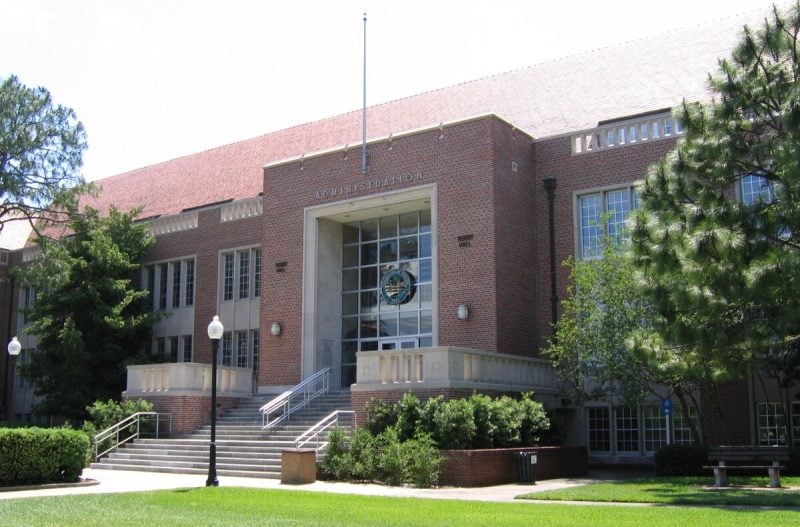
The University of Florida in Gainesville ranks as the most affordable college in the United States. Students can expect to spend an average of approximately $19,000 to $20,045 per academic year.
In-state tuition averages $8,285 annually. Room and board costs approximately $10,950, while books and supplies add around $810 to the total expenses.
The university maintains strong academic rankings alongside its affordability. It appears on U.S. News & World Report’s National Universities list and ranks among the top public schools in the nation.
Florida residents benefit from particularly low costs. In-state students at four-year public universities in Florida paid an average of $4,613 in tuition and fees for the 2021-2022 school year, significantly below the national average of $9,596.
The combination of low costs and academic quality makes the University of Florida a standout choice for budget-conscious students seeking quality education.
2. Brigham Young University-Hawaii

Brigham Young University-Hawaii operates as a private institution located on the island of Oahu. The university sits 35 miles north of Honolulu between mountains and shoreline.
The Church of Jesus Christ of Latter-day Saints runs this undergraduate university. Students can choose from bachelor’s degree programs and community college options.
BYU-Hawaii charges $4,940 annually for tuition. This rate applies to both in-state and out-of-state students.
The university ranks #6 in Regional Colleges West according to the 2025 Best Colleges rankings. It appears among the top 500 ranked institutions nationally.
BYU-Hawaii earned recognition as the cheapest college in several affordability rankings. The campus houses three main schools and colleges serving its student body.
3. California State University-Fullerton
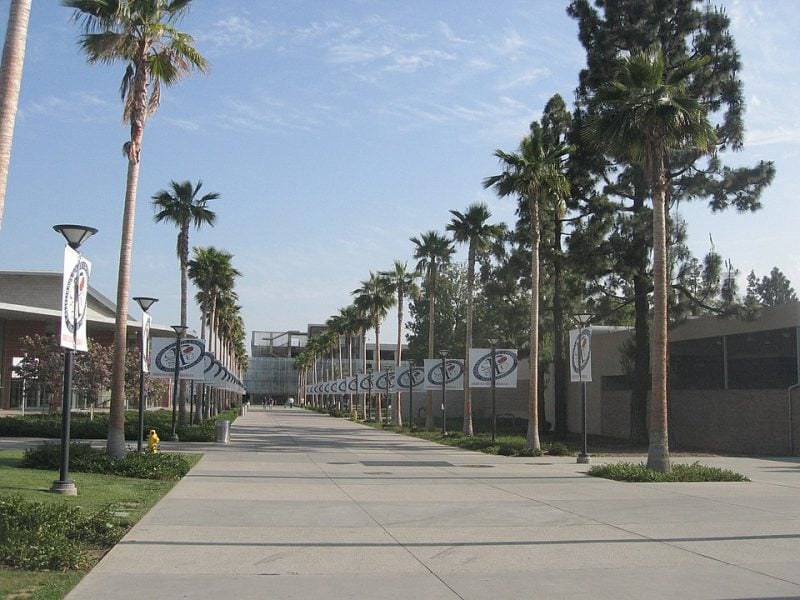
California State University-Fullerton earned a 4.5-star rating on Money magazine’s 2024 Best Colleges list. The university stands out for its combination of quality education, affordability, and strong student outcomes.
CSUF ranks #133 globally and #42 in the USA according to US News 2024 rankings. The university serves as part of the California State University system, which dominates affordability rankings nationwide.
Students at Cal State Fullerton benefit from innovative academic programs and transformative educational experiences. The university’s graduates demonstrate strong earnings potential, contributing to its high value rating.
The campus offers diverse academic opportunities while maintaining accessible tuition costs. CSUF’s location in Orange County provides students with internship and career opportunities in major metropolitan areas.
Financial aid and scholarship programs help reduce the net cost for students. The university’s commitment to affordability makes quality higher education accessible to a broad range of students.
4. University of North Carolina at Chapel Hill
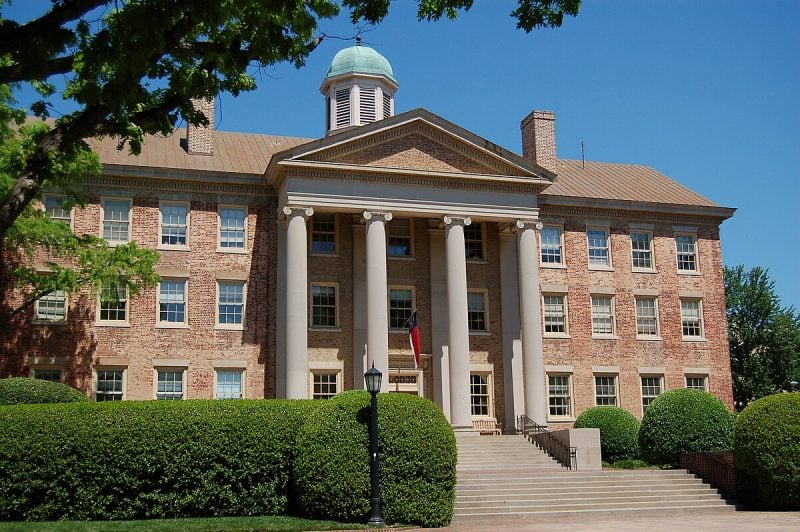
The University of North Carolina at Chapel Hill stands as America’s first public university and consistently ranks among the top affordable institutions nationwide. UNC maintains a 23-year streak of top 5 finishes among public universities according to U.S. News & World Report.
The university earned recognition as a “Best Buy” in the 2023 Fiske Guide to Colleges. This designation highlights Carolina’s combination of academic excellence and affordable tuition costs.
UNC’s strongest academic programs include biology and other sciences, traditional liberal arts such as religious studies, and journalism. The school maintains competitive admission standards with an acceptance rate of approximately 16%.
The university received 427 badges in College Factual’s 2024 rankings across various categories including overall value and quality. Students benefit from access to high-quality education at significantly lower costs compared to private institutions of similar caliber.
5. CUNY Hunter College
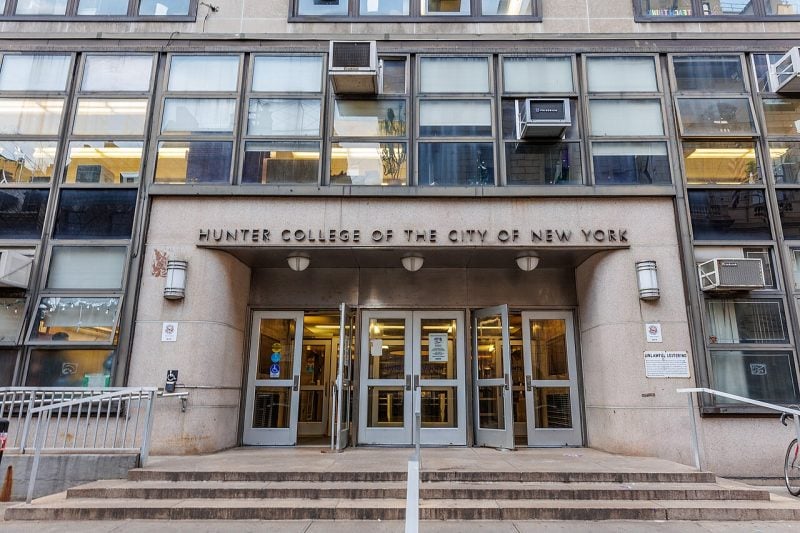
CUNY Hunter College ranks #27 among Regional Universities North in the 2025 US News rankings. The college offers exceptional value with in-state tuition at $7,380 and out-of-state fees at $19,050.
Hunter College consistently appears in multiple national rankings for affordability and quality. Money magazine named it among the top 745 colleges in the country based on graduation rates, cost, and financial aid.
The college ranks #69 in Best Value Colleges nationally and #10 in Best Value Colleges in New York. It also holds the #75 position among Best Public Colleges in the United States.
New York’s Excelsior Scholarship Program provides free tuition for in-state students from families earning up to $125,000 annually. This program applies to all CUNY colleges, including Hunter.
Hunter College combines academic excellence with affordability, making it accessible to students seeking quality education without significant financial burden.
6. University of Minnesota-Twin Cities
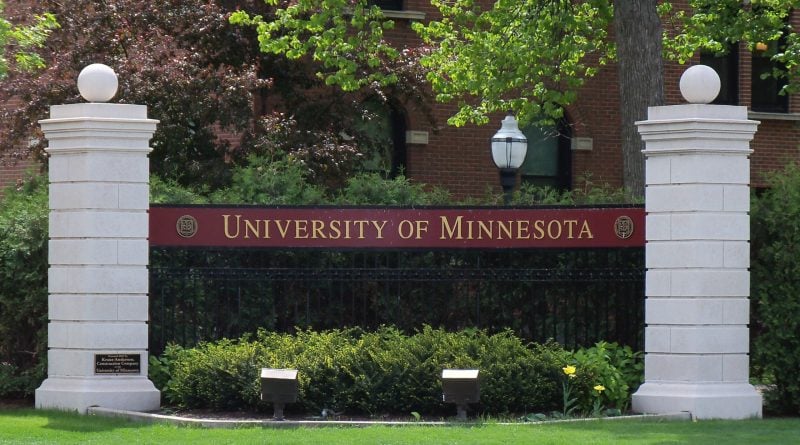
The University of Minnesota-Twin Cities stands as a leading public research university founded in 1851. The institution spans 1,204 acres in an urban Minneapolis-Saint Paul setting.
Students can choose from over 135 majors across 17 schools and colleges. Popular programs include biological sciences, management, public health, education and human development, and science and engineering.
The university ranks #54 among National Universities in 2025. In-state students pay $17,214 for tuition and fees, while out-of-state students pay $38,362.
The Twin Cities campus maintains strong academic reputation with highly ranked programs. The Carlson School of Management and College of Education and Human Development receive particular recognition.
With its combination of academic quality and relatively affordable in-state tuition, the university provides accessible higher education for Minnesota residents.
7. University of Texas at Austin

The University of Texas at Austin ranks as the best value public university in Texas. The Princeton Review places it ninth nationally among public colleges for best value.
In-state students pay $11,678 for tuition and fees. Out-of-state students face higher costs at $42,778 annually.
The university was established in 1883 as a public institution. It currently enrolls over 51,000 students across 18 colleges.
UT Austin offers more than 100 undergraduate degree programs. Students can choose from 15 different colleges within the university.
The school ranks 30th among national universities in 2025 rankings. It combines respected academic programs with relatively affordable in-state tuition rates.
The university provides strong academics alongside reasonable costs for Texas residents. This combination makes it an attractive option for students seeking quality education without excessive debt.
8. University of Georgia
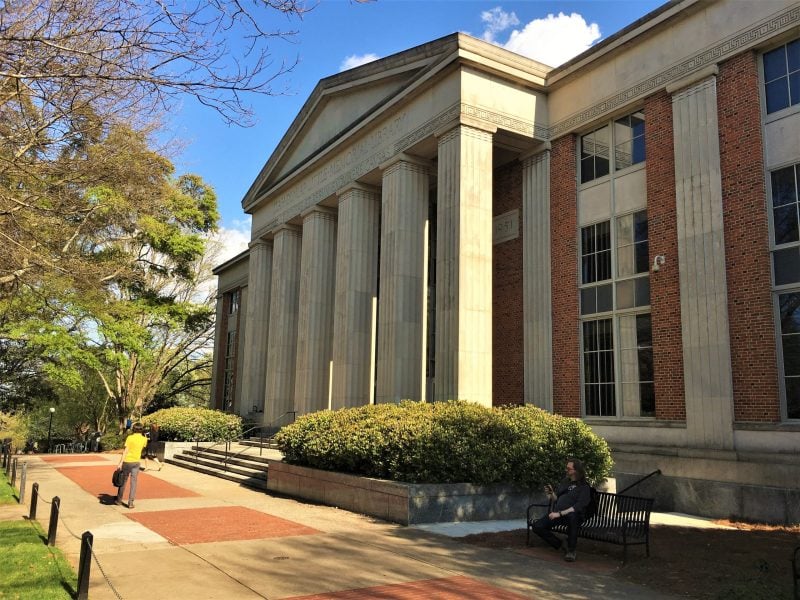
The University of Georgia stands as one of the nation’s most affordable flagship public universities. Students benefit from competitive tuition rates that provide exceptional value for a comprehensive education.
Located in Athens, UGA offers over 170 undergraduate programs across 17 schools and colleges. The university maintains strong academic standards while keeping costs manageable for students.
In-state students pay significantly reduced tuition compared to out-of-state rates. Georgia residents can access world-class education at a fraction of private university costs.
The university provides numerous financial aid opportunities including merit-based scholarships and need-based grants. Many students graduate with minimal debt due to these support programs.
UGA’s strong alumni network and career services help graduates secure employment after graduation. The return on investment remains excellent given the relatively low educational costs.
9. Florida State University

Florida State University stands as one of the most affordable options for quality higher education in the United States. The university ranks #54 among National Universities according to U.S. News & World Report’s 2025 Best Colleges rankings.
In-state students pay $6,517 annually for tuition and fees. Out-of-state students face costs of $21,683 per year.
The university maintains its position among the top 25 public universities nationally. FSU serves over 32,000 students at its Tallahassee campus while maintaining selective admissions standards.
Students benefit from strong career preparation programs alongside academic excellence. The Princeton Review recognizes FSU as a top value institution that delivers quality education at reasonable costs.
The total annual cost averages around $20,058, making it accessible to students from various economic backgrounds while providing excellent return on investment.
10. University of Wisconsin-Madison
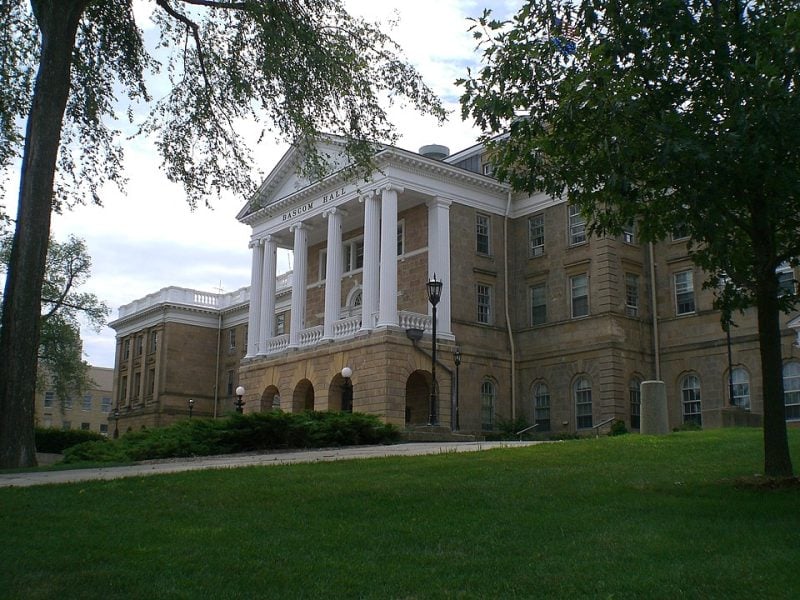
The University of Wisconsin-Madison stands as Wisconsin’s flagship public university and attracts the most students in the state system. The institution offers a prestigious education often referred to as a “Public Ivy” experience.
In-state students face total undergraduate tuition and expenses approaching $29,000 annually. Out-of-state residents pay significantly more at nearly $59,000 per year.
Despite being the most expensive school in the University of Wisconsin system, UW-Madison provides strong value through its academic reputation and comprehensive programs. The university maintains competitive costs compared to other flagship public institutions nationwide.
Students benefit from extensive research opportunities and a wide range of academic offerings. The campus delivers personalized attention within a large university setting, combining resources of a major research institution with quality undergraduate education.
11. University of Washington-Seattle
The University of Washington-Seattle stands as the top affordable college in the Pacific Northwest. This flagship public research university consistently ranks among the best value institutions in the United States.
The campus offers exceptional academic quality combined with competitive pricing for in-state students. Out-of-state students also benefit from relatively affordable tuition compared to similar research universities.
Princeton Review has recognized UW-Seattle in its Best Value College Rankings. The university provides strong return on investment through high graduation rates and solid alumni earnings.
Students access world-class research opportunities and renowned faculty across multiple disciplines. The Seattle location offers internship and career opportunities in technology, healthcare, and other growing industries.
Financial aid programs help make education accessible to students from diverse economic backgrounds. The university’s commitment to affordability aligns with Washington state’s priority of providing accessible higher education.
12. University of Illinois Urbana-Champaign
The University of Illinois Urbana-Champaign ranks #33 among National Universities in the 2025 Best Colleges rankings. This public research institution offers strong programs in engineering, business, and computer science.
In-state students pay $17,640 for tuition and fees. Out-of-state students face higher costs, though the university provides various financial aid options.
The university serves approximately 34,000 students through on-campus and online programs. Students can choose from numerous majors, minors, and concentrations across different academic disciplines.
UIUC appears in multiple affordability rankings, including lists of affordable colleges in the Midwest and online colleges with high graduation rates. The campus operates as the flagship institution of the Illinois University System.
Actual costs vary based on factors like major selection, housing choices, meal plans, and individual lifestyle preferences. The university calculates fees based on the number of semester hours students register for each term.
13. Ohio State University
Ohio State University stands as one of the nation’s most affordable major research institutions. Founded in 1870 as a land-grant college, OSU has evolved into a top-tier university ranking among the top 20 public universities nationwide.
The university offers exceptional value for students seeking quality education at reasonable costs. More than half of Ohio State students graduate with no student loan debt, significantly better than the national average.
OSU provides access to over 200 academic majors with renowned faculty members. Students benefit from extensive research opportunities and resources typical of major universities while maintaining affordability.
The Columbus campus serves a diverse student population with comprehensive support services. Ohio residents receive substantial tuition savings compared to out-of-state students, making it particularly attractive for in-state applicants.
Ohio State’s combination of academic excellence, research opportunities, and financial accessibility makes it a compelling choice for budget-conscious students seeking a prestigious education.
14. Indiana University Bloomington
Indiana University Bloomington climbed four positions in 2025 rankings, breaking into the top 10 most affordable colleges nationwide. The university offers excellent value with in-state tuition at $12,144 annually.
Out-of-state students pay $41,891 in tuition and fees. Despite higher costs for non-residents, the institution maintains strong academic credentials with a national ranking of #73 among universities.
The school ranks #29 out of 1,398 institutions for best bachelor’s degree programs. This places Indiana University Bloomington in the top 5% of colleges nationally for undergraduate education quality.
Students benefit from diverse academic offerings across multiple disciplines. The university combines affordability with academic excellence, particularly for Indiana residents seeking quality higher education without excessive financial burden.
15. Arizona State University
Arizona State University ranks as one of the most affordable options for higher education in the United States. The university charges $12,223 for in-state tuition and fees, while out-of-state students pay $33,139.
ASU operates primarily from its Tempe campus, which serves over 40,000 undergraduate students. The university founded in 1885 predates Arizona’s statehood by 27 years.
The institution ranks #121 among National Universities according to recent rankings. Students benefit from access to more than 1,500 student organizations across campus.
ASU maintains recognition as one of the largest universities in the country with total enrollment exceeding 145,000 students. The university offers extensive program diversity, contributing to its appeal among students seeking quality education at reasonable costs.
16. University of Maryland-College Park
The University of Maryland-College Park serves as the state’s flagship public university. Students benefit from generous in-state tuition discounts that make quality education accessible.
US News ranks the institution #44 among National Universities and #20 among Public Universities. This recognition reflects strong academic standards and research opportunities.
The university offers extensive online course options alongside traditional campus programs. Students can choose from a wide range of undergraduate and graduate programs.
Payscale places the school 84th for in-state students and 147th for out-of-state students among nearly 2,000 colleges for value. This ranking considers both education quality and cost-effectiveness.
The campus provides access to research facilities and faculty expertise across multiple disciplines. Students gain practical experience through internships and research partnerships.
Financial aid options help reduce the overall cost burden for qualifying students. The combination of affordable tuition and quality education makes this university a solid choice for budget-conscious students.
17. University of Missouri-Columbia
The University of Missouri-Columbia, commonly known as Mizzou, serves as the flagship campus of the University of Missouri system. Located in Columbia, Missouri, this public research university offers comprehensive educational programs across multiple disciplines.
Mizzou provides competitive tuition rates for both in-state and out-of-state students. The university maintains strong academic programs in journalism, business, engineering, and agriculture.
Students benefit from extensive research opportunities and a large alumni network. The campus features modern facilities and resources that support academic success.
The university offers various financial aid options including scholarships, grants, and work-study programs. These aid packages help make education more accessible to students from different economic backgrounds.
Mizzou’s location in Columbia provides students with internship opportunities and cultural experiences. The university consistently ranks among quality public institutions while maintaining reasonable costs for higher education.
18. University of Iowa
The University of Iowa stands as one of the state’s premier public research institutions. Located in Iowa City, the university offers comprehensive undergraduate and graduate programs across multiple disciplines.
In-state students benefit from competitive tuition rates compared to other major research universities. The institution maintains strong academic standards while providing accessible education to Iowa residents.
The university excels in areas including medicine, law, engineering, and liberal arts. Students gain access to extensive research opportunities and modern facilities throughout the campus.
Financial aid programs help reduce the overall cost of attendance for qualifying students. The university’s combination of academic quality and reasonable pricing makes it an attractive option for budget-conscious students seeking a research university experience.
19. University of Arizona
The University of Arizona offers exceptional value for students seeking quality education at an affordable price. The institution ranks No. 62 in Forbes’ “Best Value Colleges” list for its combination of educational excellence and reasonable costs.
Students pay an average net price of $18,144, making it Arizona’s top value college according to 2025 rankings. The university maintains an 8 out of 10 academic rating while keeping costs manageable.
Located in Tucson, the University of Arizona provides comprehensive degree programs across multiple disciplines. The school has jumped 46 spots in Forbes’ best value rankings, demonstrating its commitment to affordability.
As one of Arizona’s three public universities, it serves thousands of students annually. The institution balances academic rigor with financial accessibility, making higher education attainable for diverse student populations.
20. University of Nebraska-Lincoln
The University of Nebraska-Lincoln ranks among the nation’s best value colleges according to The Princeton Review. The school offers strong return on investment with competitive tuition rates.
In-state students pay $10,434 in tuition and fees annually. Out-of-state students face higher costs at $28,764 per year.
The university holds the #152 ranking among National Universities in the 2025 Best Colleges edition. It serves as Nebraska’s flagship public institution and land-grant university.
Students can choose from 175 bachelor’s degree programs across various fields. The school offers 74 master’s programs and 72 doctoral programs for advanced study.
The Princeton Review’s Best Value Colleges list considers over 40 data points including alumni salaries and career outcomes. This comprehensive evaluation method helps identify schools that provide strong educational value for the investment.
21. University of South Florida
The University of South Florida ranks 91st among National Universities according to U.S. News & World Report. The Tampa-based institution also places 45th in Top Public Schools rankings.
In-state students pay $6,410 in tuition and fees. Out-of-state students face costs of $17,324 annually.
The Princeton Review recognized USF as one of the Best Value Colleges for 2020. This recognition highlights the university’s combination of quality education and affordable pricing.
USF maintains strong academic standards while keeping costs manageable. The university provides career readiness programs alongside traditional degree offerings.
Students benefit from the school’s location in Tampa, offering internship and job opportunities. The campus provides access to research facilities and modern academic resources.
22. University of Colorado Boulder
The University of Colorado Boulder ranks #98 among National Universities in the 2025 edition of Best Colleges. The school offers competitive tuition rates for Colorado residents.
In-state students pay $14,002 in tuition and fees annually. Out-of-state students face higher costs at $43,622 per year.
CU Boulder maintains strong academic programs across multiple fields. Several programs rank in the top 25 nationally among public institutions, including engineering and business programs.
The university provides excellent value for veterans and military families. It ranks #27 among public universities nationally for veterans, offering specialized benefits and support services.
Students benefit from the school’s mountain location and comprehensive educational opportunities. The combination of reasonable in-state tuition and quality academic programs makes CU Boulder an attractive option for Colorado residents seeking affordable higher education.
23. University of Connecticut
The University of Connecticut stands as the state’s flagship public institution. Located in Storrs, UConn serves over 32,000 students across multiple campuses.
In-state students benefit from significantly lower tuition rates compared to private alternatives. The university maintains strong academic programs across numerous disciplines.
UConn’s business, engineering, and education programs receive national recognition. The institution also offers robust research opportunities for undergraduate students.
The campus provides extensive student services and modern facilities. Students can access career counseling, academic support, and recreational amenities.
Connecticut residents find UConn particularly attractive due to affordable tuition costs. The university’s reputation enhances job prospects for graduates throughout New England.
UConn’s athletic programs, especially basketball, create a vibrant campus culture. The school balances academic rigor with active student life opportunities.
24. University of Massachusetts Amherst
The University of Massachusetts Amherst ranks #58 among National Universities in the 2025 Best Colleges edition. The public research institution offers in-state tuition of $17,772 and out-of-state tuition that provides competitive value.
UMass Amherst earned recognition in The Princeton Review’s 2024 Best Value Colleges guide. The university placed in the Top 50 Best Value Colleges ranking for public schools.
The institution landed the #10 spot for Best Colleges for the Money in Massachusetts for 2024. This ranking considers financial aid availability and overall educational value.
Students can choose from nearly 100 undergraduate majors and over 70 graduate programs. The university also offers close to 50 doctoral programs across various fields.
UMass Amherst maintains its commitment to sustainability, earning a spot on Princeton Review’s Top 50 Green Colleges list for nine consecutive years.
25. University of Kentucky
The University of Kentucky stands as one of the state’s most prominent public research institutions. Located in Lexington, the university serves over 30,000 students across undergraduate and graduate programs.
In-state students benefit from significantly reduced tuition costs compared to out-of-state rates. The university offers extensive financial aid programs to help students manage educational expenses.
UK provides strong academic programs across multiple disciplines, including engineering, business, agriculture, and medicine. The institution maintains respected research facilities and partnerships with industry leaders.
Students can access numerous scholarship opportunities based on academic merit and financial need. The university’s large alumni network creates valuable connections for career advancement after graduation.
The campus features modern facilities and comprehensive student support services. Kentucky residents find particular value in the combination of affordable tuition and quality education offerings at this flagship state university.
26. University of Oregon
The University of Oregon serves approximately 20,000 students across its Eugene campus. The public research university offers over 300 academic programs through nine schools and colleges.
In-state students pay around $13,000 annually in tuition and fees. Out-of-state students face higher costs at approximately $38,000 per year.
The university provides substantial financial aid opportunities. Nearly 60% of students receive some form of financial assistance.
Popular programs include business, journalism, education, and psychology. The university maintains strong connections with local employers and industries.
Students benefit from a 17:1 student-to-faculty ratio. The campus features modern facilities and extensive research opportunities for undergraduates.
The university’s location in Eugene provides access to outdoor recreation and cultural activities. Students can participate in over 300 student organizations and clubs.
27. University of Tennessee-Knoxville
The University of Tennessee-Knoxville ranks #109 among National Universities in the 2025 Best Colleges rankings. In-state students pay $13,812 for tuition and fees, while out-of-state students pay $32,956.
The Princeton Review named UT-Knoxville to its Top 50 Best Value Colleges list for 2025. This recognition considers academic rigor, affordability, and career outcomes for graduates.
Money Magazine ranked the university among America’s best colleges for affordability and quality. UT-Knoxville received a four-star rating out of five and stands as the only public university in Tennessee to make Money’s list.
The university also ranked in the top 30 percent among 1,500 higher education institutions worldwide according to QS World University Rankings. Forbes Magazine has recognized the institution for its quality and value combination.
28. University of Alabama
The University of Alabama stands out as the top best value college in Alabama for 2025. The school earned an 8 out of 10 academic rating while maintaining an affordable average net price of $21,761.
Students benefit from the university’s strong reputation and comprehensive academic programs. The institution consistently ranks as both the highest value public state college and overall best value college in Alabama.
Located in Tuscaloosa, the university offers a traditional college experience with modern facilities. The campus provides extensive resources for undergraduate and graduate students across multiple disciplines.
Financial aid opportunities help make attendance more accessible for students from various economic backgrounds. The university’s combination of academic quality and reasonable costs creates significant value for students seeking higher education in the Southeast.
29. University of Utah
The University of Utah stands as a major public research university located in Salt Lake City. The institution serves over 33,000 students across undergraduate and graduate programs.
In-state students benefit from competitive tuition rates compared to other flagship state universities. Out-of-state students pay higher fees but still receive value through quality academics and research opportunities.
The university offers strong programs in engineering, business, medicine, and computer science. Students gain access to cutting-edge facilities and research centers throughout campus.
Financial aid packages help reduce costs for qualifying students. Merit-based scholarships and need-based grants provide additional funding options.
The campus sits near the Wasatch Mountains, offering outdoor recreation opportunities. Students enjoy access to skiing, hiking, and other activities year-round.
Graduates enter the workforce with degrees from a respected institution. The university maintains strong connections with local employers and national companies.
30. Washington State University
Washington State University operates from its main campus in Pullman, a student-friendly college town. The university serves over 20,000 students annually from around the world.
WSU offers extensive academic options with over 200 undergraduate programs. Nearly 150 graduate programs are also available across high-demand fields.
Popular programs include Business, Computer Science, Engineering, and Agriculture. These fields provide strong career preparation for students.
The university’s in-state tuition and fees total $13,391 for Washington residents. Out-of-state students pay $29,950 in tuition and fees.
WSU ranks #189 among National Universities in the 2025 Best Colleges rankings. The campus location in Pullman provides an affordable cost of living for students.
The university combines academic quality with reasonable pricing. This makes it an attractive option for students seeking value in higher education.
Key Factors in Choosing an Affordable College
Students must analyze financial aid packages, calculate true attendance costs, and examine institutional performance metrics. These three components determine the actual value and long-term financial impact of college decisions.
Understanding Financial Aid Options
Federal aid forms the foundation of most financial aid packages. Students must complete the FAFSA to access Pell Grants, federal loans, and work-study programs.
Pell Grants provide up to $7,395 annually for eligible students without repayment requirements. State grants often supplement federal aid with additional funding based on residency and financial need.
Merit-based scholarships reward academic achievement, test scores, or special talents. Many colleges offer automatic scholarships based on GPA and standardized test scores.
Need-based aid calculations vary between institutions. Private colleges often provide more generous aid packages than their sticker prices suggest.
Work-study programs allow students to earn money while attending classes. Some specialized work colleges like College of the Ozarks offer free tuition in exchange for campus employment.
Students should compare net prices rather than published tuition rates. The net price calculator on each college’s website provides personalized cost estimates based on family income and circumstances.
Evaluating Total Cost of Attendance
Total cost extends beyond tuition to include housing, meals, books, transportation, and personal expenses. Room and board often equals or exceeds tuition costs at many institutions.
In-state public colleges typically offer the lowest total costs for residents. Out-of-state students face significantly higher tuition rates at public institutions.
Living arrangements greatly impact expenses. On-campus housing provides convenience but often costs more than off-campus alternatives in many areas.
Students should budget for textbooks, supplies, and technology requirements. Digital resources and rental programs can reduce these expenses substantially.
Transportation costs vary based on distance from home and available public transit options. Students attending local colleges save thousands annually on travel expenses.
Personal expenses including clothing, entertainment, and miscellaneous items typically range from $2,000 to $4,000 annually depending on lifestyle choices and location.
Considering Graduation and Retention Rates
Four-year graduation rates indicate institutional effectiveness and student success. Higher graduation rates typically correlate with better academic support and resources.
Students who graduate within four years avoid additional tuition, housing, and opportunity costs. Each extra year can add $20,000 to $50,000 in total expenses.
Retention rates measure the percentage of first-year students who return for sophomore year. Rates above 85% suggest strong student satisfaction and academic support systems.
Schools with low retention rates may indicate inadequate support services, poor academic preparation, or financial pressures forcing students to leave.
Career services and job placement rates affect post-graduation earning potential. Strong alumni networks and employer relationships improve employment outcomes.
Students should research specific program outcomes within their intended major. Some departments may significantly outperform institutional averages in graduation rates and job placement.
Long-Term Value of Affordable Colleges
Affordable colleges deliver substantial career advancement opportunities and financial returns that extend decades beyond graduation. Students who choose cost-effective institutions often achieve comparable professional success to their peers from expensive universities while carrying significantly less debt burden.
Career Opportunities After Graduation
Graduates from affordable colleges access diverse career paths across multiple industries. Many employers prioritize skills and experience over institutional prestige when making hiring decisions.
High-Demand Fields for Affordable College Graduates:
- Healthcare and nursing
- Information technology
- Engineering and manufacturing
- Education and social services
- Business and finance
State universities and community colleges maintain strong relationships with local employers. These connections create direct pathways to internships and full-time positions. Regional businesses often recruit heavily from nearby affordable institutions.
Career services at affordable colleges provide comprehensive support including resume writing, interview preparation, and job placement assistance. Many schools report placement rates above 85% within six months of graduation.
Professional networking opportunities emerge through alumni associations and industry partnerships. These connections prove valuable for career advancement and job transitions throughout graduates’ working lives.
Return on Investment for Students
Students at affordable colleges typically graduate with debt levels 40-60% lower than those at expensive private institutions. Lower debt payments allow graduates to pursue homeownership, start businesses, or invest in additional education sooner.
Average Debt Comparison:
- Affordable public colleges: $25,000-$35,000
- Expensive private colleges: $45,000-$65,000
- Community colleges: $15,000-$25,000
Starting salaries for graduates often match those from costlier institutions within the same field. Engineering graduates from affordable state schools earn comparable wages to those from prestigious universities.
The debt-to-income ratio remains manageable for most affordable college graduates. Monthly loan payments typically consume 8-12% of gross income compared to 15-20% for expensive college graduates.
Career advancement opportunities depend more on individual performance and skills than alma mater. Many affordable college graduates reach executive positions within 10-15 years of graduation.
Notable Alumni and Success Stories
Affordable colleges have produced numerous successful leaders across various sectors. State universities and community colleges count CEOs, politicians, and innovators among their alumni.
Examples of Successful Affordable College Alumni:
- Business Leaders: Many Fortune 500 CEOs attended state universities
- Public Service: Governors and senators from community college backgrounds
- Technology: Software entrepreneurs who started at regional universities
- Healthcare: Medical professionals from affordable undergraduate programs
Community college transfer students often achieve remarkable success after completing degrees at four-year institutions. These pathways demonstrate the effectiveness of affordable education routes.
Regional universities produce graduates who become pillars of their local communities. These alumni create businesses, lead nonprofit organizations, and drive economic development.
The success stories highlight how affordable education provides solid foundations for achievement. Graduates leverage their practical education and strong work ethics to build meaningful careers across all professional levels.





